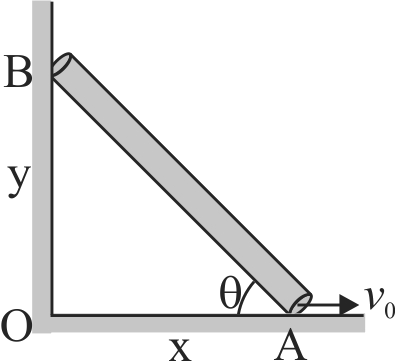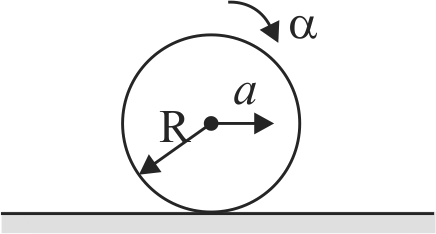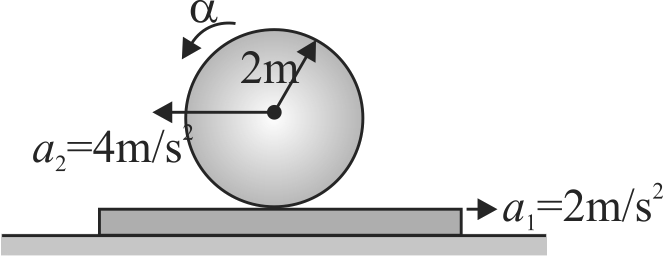366058
A small wheel fixed coaxially on a bigger one of double the radius. The system rotates about the common axis. The strings supporting A and B do not slip on the wheels. If \(\mathrm{x}\) and \(\mathrm{y}\) are the distances travelled by A and B in the same time interval, then
366061
End of a rod \(A B\) is being pulled on the floor with a constant velocity \(v_{0}\) as shown in the figure. Taking the length of the rod as \(l\), at an instant when the rod makes an angle \(37^{\circ}\) with the horizontal, calculate the velocity of end \(B\)
366058
A small wheel fixed coaxially on a bigger one of double the radius. The system rotates about the common axis. The strings supporting A and B do not slip on the wheels. If \(\mathrm{x}\) and \(\mathrm{y}\) are the distances travelled by A and B in the same time interval, then
366061
End of a rod \(A B\) is being pulled on the floor with a constant velocity \(v_{0}\) as shown in the figure. Taking the length of the rod as \(l\), at an instant when the rod makes an angle \(37^{\circ}\) with the horizontal, calculate the velocity of end \(B\)
366058
A small wheel fixed coaxially on a bigger one of double the radius. The system rotates about the common axis. The strings supporting A and B do not slip on the wheels. If \(\mathrm{x}\) and \(\mathrm{y}\) are the distances travelled by A and B in the same time interval, then
366061
End of a rod \(A B\) is being pulled on the floor with a constant velocity \(v_{0}\) as shown in the figure. Taking the length of the rod as \(l\), at an instant when the rod makes an angle \(37^{\circ}\) with the horizontal, calculate the velocity of end \(B\)
366058
A small wheel fixed coaxially on a bigger one of double the radius. The system rotates about the common axis. The strings supporting A and B do not slip on the wheels. If \(\mathrm{x}\) and \(\mathrm{y}\) are the distances travelled by A and B in the same time interval, then
366061
End of a rod \(A B\) is being pulled on the floor with a constant velocity \(v_{0}\) as shown in the figure. Taking the length of the rod as \(l\), at an instant when the rod makes an angle \(37^{\circ}\) with the horizontal, calculate the velocity of end \(B\)
366058
A small wheel fixed coaxially on a bigger one of double the radius. The system rotates about the common axis. The strings supporting A and B do not slip on the wheels. If \(\mathrm{x}\) and \(\mathrm{y}\) are the distances travelled by A and B in the same time interval, then
366061
End of a rod \(A B\) is being pulled on the floor with a constant velocity \(v_{0}\) as shown in the figure. Taking the length of the rod as \(l\), at an instant when the rod makes an angle \(37^{\circ}\) with the horizontal, calculate the velocity of end \(B\)



